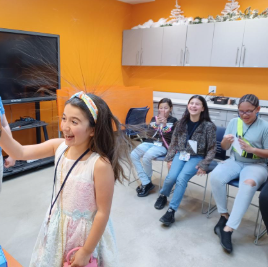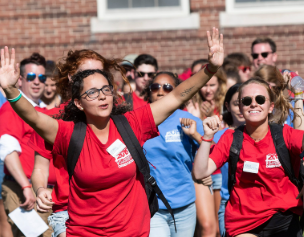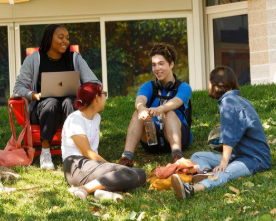Living and studying in the United States offers international students a wonderful opportunity to connect with people from diverse backgrounds. However, communication styles in American culture can feel different from what you might be used to at home. From casual small talk to academic discussions, improving your communication skills can help you feel more confident, make new friends, and succeed in both social and professional settings. Understanding how Americans express themselves and how to respond effectively will make your everyday life smoother and more enjoyable.
One of the most important parts of communication in American culture is clarity. Americans generally appreciate direct and honest communication. This does not mean being rude or overly blunt, but it does mean saying what you think clearly and respectfully. For example, if you disagree with someone’s idea in class or at work, it is acceptable to share your opinion as long as you explain it politely. Instead of saying “you’re wrong,” you might say, “I see your point, but I think there might be another way to look at it.” This approach keeps the conversation positive while allowing you to express yourself.
Another essential element of everyday communication is small talk. In many parts of the United States, people often begin conversations with light topics such as the weather, sports, or local events. Small talk is not just meaningless chatter—it’s a way to build connections and show friendliness. For instance, when you meet someone new, asking “How’s your day going?” or commenting on something around you like “The campus is really beautiful today” can help break the ice. Over time, these small interactions lead to deeper relationships and stronger social networks.
Listening plays a key role in improving communication. In American culture, active listening is highly valued. This means not just hearing the words someone says but also showing that you are paying attention. You can do this by maintaining eye contact, nodding occasionally, and responding with short phrases like “I understand” or “That’s interesting.” Avoid interrupting, and wait for your turn to speak. People appreciate it when you give them space to express their ideas fully. Listening carefully also helps you learn more about cultural norms, language expressions, and different perspectives.
Body language is another powerful form of communication that goes beyond words. Americans often use gestures, facial expressions, and posture to express feelings or emphasize points. Smiling, for instance, is considered a friendly and welcoming gesture. Maintaining moderate eye contact shows confidence and sincerity, while standing or sitting with an open posture signals approachability. Be mindful of personal space, as Americans typically prefer an arm’s length distance when talking to someone. Learning these nonverbal cues will help you understand messages more accurately and express yourself effectively.
Language proficiency is, of course, part of strong communication. But improving your English does not mean you have to speak perfectly. Fluency grows through practice and exposure. Try engaging in conversations every day, even simple ones. Attend language exchange events or join campus clubs where you can talk with native speakers. Watching American movies, TV shows, or podcasts can also help you understand how people use idioms and tone in real-life situations. Over time, you’ll become more comfortable expressing your ideas naturally.
It’s also helpful to understand that humor plays a big role in American communication. Many Americans use light jokes or playful comments to make conversations more relaxed. If someone jokes with you, it’s usually a sign of friendliness, not disrespect. However, humor can be tricky because what’s funny in one culture may not be appropriate in another. When you’re unsure, it’s best to observe first or ask politely what something means. Laughing along when others do, even if you don’t fully get the joke, can still show openness and friendliness.
Email and digital communication are another part of everyday life in the United States. Whether you’re writing to a professor, employer, or classmate, your tone and structure matter. Americans usually prefer short, clear, and polite messages. Begin with a friendly greeting like “Hi Professor Smith” or “Hello Alex,” and end with “Best regards” or “Thank you.” Avoid using slang or overly casual expressions in professional messages. Reading over your email before sending helps ensure your message is respectful and easy to understand.
Confidence is key when communicating in a new culture. It’s natural to feel nervous or afraid of making mistakes, but remember that most people appreciate your effort to connect. If you don’t understand something, it’s perfectly fine to ask for clarification. You might say, “Could you please explain that again?” or “I’m not sure I understood—could you give an example?” Asking questions shows that you’re engaged and eager to learn. Americans generally see this as a positive trait, not a weakness.
Understanding the cultural value of time can also improve communication. Americans often view time as precious and prefer punctuality in both conversations and appointments. Being on time for meetings, responding to messages promptly, and keeping discussions focused are seen as signs of respect. If you’re going to be late or need to reschedule, a quick message explaining your situation is appreciated. These habits not only show professionalism but also help maintain strong relationships.
Cultural awareness goes hand in hand with communication skills. The United States is a diverse country, and you’ll meet people from different ethnic, linguistic, and social backgrounds. What feels normal to one person might seem unusual to another. By staying open-minded and respectful, you’ll navigate these differences more easily. Simple phrases like “That’s interesting, tell me more” or “I’ve never thought about it that way” can invite meaningful exchanges and help you learn about others’ experiences.
Practice is the best way to grow. The more you communicate, the more natural it becomes. Try to challenge yourself to talk to new people every week, whether in class discussions, community events, or local gatherings. You’ll find that most Americans appreciate friendliness and curiosity. Each conversation you have builds your confidence and deepens your understanding of the culture.
Improving your everyday communication skills in American culture takes patience and a willingness to adapt. It’s not about changing who you are but learning how to express yourself in ways that others can understand and appreciate. Clear speech, active listening, respectful behavior, and cultural curiosity all contribute to successful communication. Over time, you’ll notice that interactions become more effortless, and you’ll feel more connected to the people around you.
As you continue your journey in the United States, remember that communication is not just about speaking English well—it’s about building bridges between cultures. Every friendly exchange, thoughtful question, and shared smile helps you become part of a larger community. The ability to communicate effectively will enrich your studies, friendships, and everyday life, making your time in America truly rewarding.






